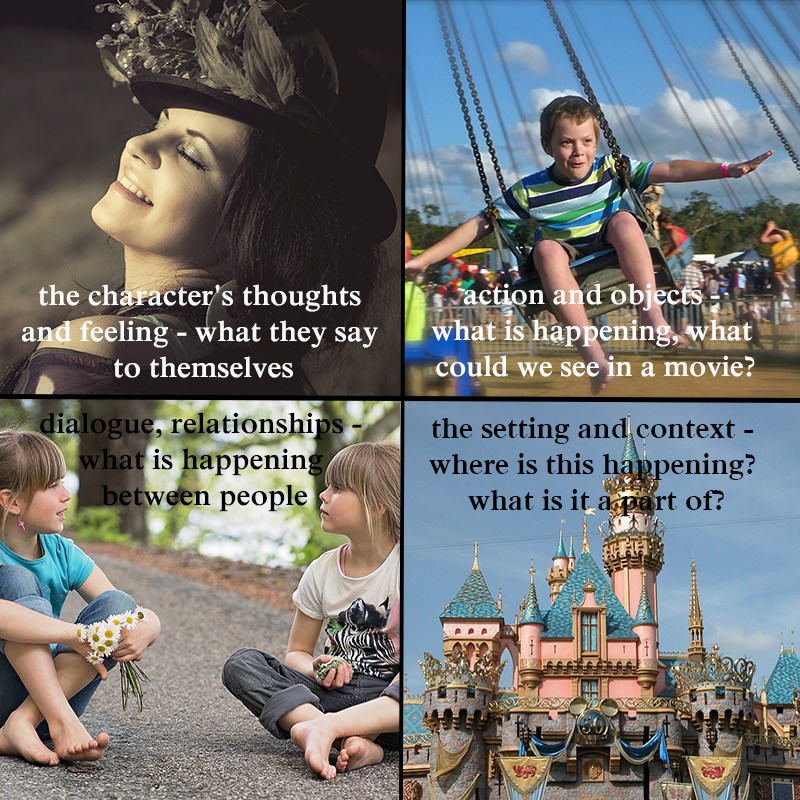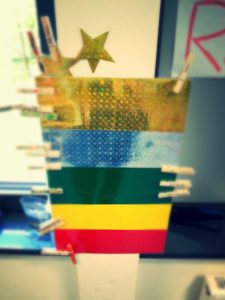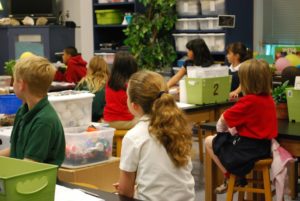Integrally Hacking Primary School: Teaching Integral Theory for 9 year olds
When I started teaching I had the naive belief that I could teach the basics of AQAL to a 9 year old in a kind of friendly way. Guess what. That didn’t work. Of course it didn’t.
I shifted my approach and saw that Integral wasn’t needed as a curriculum objective in Grade 4 to serve a child. It was better suited to enhance what was already happening in class. Curiosity led me to find how AQAL could enrich the mundane components of teaching.
Here are just two examples:
1) Quadrants in students’ descriptive writing
2) Identifying states to help students manage their behavior and the impact on the class.
Quadrants in students’ descriptive writing
“Go back and add more detail” – I cringe knowing that I used to utter those words as feedback to students. To change this, I took the quadrants and presented them to my class explaining that in their writing they could always choose to describe these 4 things in a scene:
(UL) the character’s thoughts and feelings – what they say to themselves
(LL) dialogue, relationships – what is happening between people
(UR) action and objects – what is happening, what could we see in a movie?
(LR) the setting and context – where is this happening? what is it a part of?

Students play with drafting scenes attempting to only focus on one quadrant. Then they go back and toy with balancing their descriptions using each quadrant like paints on an artist’s palette. They can combine these 4 descriptions in any variety of ways to produce the desired impact in their writing and convey what they want to as writers.
Students are using the quadrants to see the world and think through them in an experiential manner, rather than abstractly through theory.
Identifying states to help students manage their behavior and the impact on the class
The behavior chart on my classroom wall resembled a stop light. Student names were on clothespins. The idea was that if kids were behaving “well” their name stayed on green. If they got out of line, the teacher put their name down onto the yellow area as a subtle threat that the student was on their way to punishment and if they slipped up again they dropped to red and some kind of consequence was enacted.
These colours represented various states to me rather than degrees of punishment. I decided to add silver and gold levels above the green level. I then asked students if they could identify 5 different states that they experience in school from worst (red) to the absolute best (gold). They created descriptors for each colour explaining in detail what they felt inside, how they were with others and what actions they might demonstrate at each of the states.
Ideas emerged like:
 Red: I am not proud of what I am doing, but I can’t help it. I might want to hurt myself or might be hurting someone else on purpose. My body is out of control or really tense.
Red: I am not proud of what I am doing, but I can’t help it. I might want to hurt myself or might be hurting someone else on purpose. My body is out of control or really tense.
Yellow: I’m not quite feeling like myself. I might be distracted or bothering others. I might be looking around the room or doing things that distract me. Maybe a little bit nervous or uncomfortable.
Green: A normal day, not really feeling good or bad. Could be better, but glad I am not worse. I’m getting along with others and problem solving when needed. I probably look like I am doing all of the “normal” things that I would do.
Silver: I might be a role model to others right now. I feel gratitude for what I have in my life and want myself and others to feel great. I’m interested and active. I might be smiling or have an excited or peaceful look on my face.
Gold: The birthday feeling. It is really fun to be here and I feel my best. I just want myself and others to feel like this if they can. I am in control of my body, but also might do very alive movements either big or small.
We then explored how you can alter a state that you don’t like. Students generated ideas about how to get themselves to the next highest colour. For example, to get from yellow to green just stop and take a few deep breaths. Notice what is going well for you today that you aren’t showing gratitude for.
I admit that many days I needed to follow the kids’ advice to get myself back to green. Oh yeah, I have my own clothespin with my name on it too.
Now that students were well versed in identifying their various states, they were put in charge of self-monitoring. They were the only one in charge of putting their clothespin where it belonged. I was no longer punishing a kid who had been in a fight with his family that morning for showing up on red. I could hear from them first thing in the morning about their issues with self-regulation and help to deal with problems before they manifested.
Students are allowed to change the position of their clothespin throughout the day which has led to many surprising moments for students about just how much our state can change over the course of 7 hours together.
This doesn’t mean there aren’t disagreements. If a child has themselves on Gold, but is intentionally bothering someone, tossing books in the class and appears to be agitated, I simply state “I notice you are (and then state what I see) yet you are telling me you are on Gold and that behavior doesn’t match. Please reflect about where you are at and what you could do”.
Although it takes time to set this kind of culture up in the room, the short-term and long-term payoff over the course of the school year has been huge. Seeing kids identify their states, work with them and develop a greater sense of self-regulation and self-direction demonstrates how an integral approach brought more benefits than the previous provided.
 These are a few examples of how integral brought more life into what I was already doing in class. I’ve also toyed with teal organizational structures for our student council which has led to the students creating a handbook and list of agreed upon principles that allow for a fluid membership and set of responsibilities. I’ve found a place for multiple perspectives and considering various stages of consciousness when making class decisions and have started making connections between student led inquiry units and the quadrants to ensure a more thorough relationship with a topic.
These are a few examples of how integral brought more life into what I was already doing in class. I’ve also toyed with teal organizational structures for our student council which has led to the students creating a handbook and list of agreed upon principles that allow for a fluid membership and set of responsibilities. I’ve found a place for multiple perspectives and considering various stages of consciousness when making class decisions and have started making connections between student led inquiry units and the quadrants to ensure a more thorough relationship with a topic.
AQAL has a place in the classroom, but it isn’t a mandated one. It is a solution waiting to find a problem. It can breathe life into what is already there.
Robert Macleod, Phorms Frankfurt Taunus Primary School, Germany


